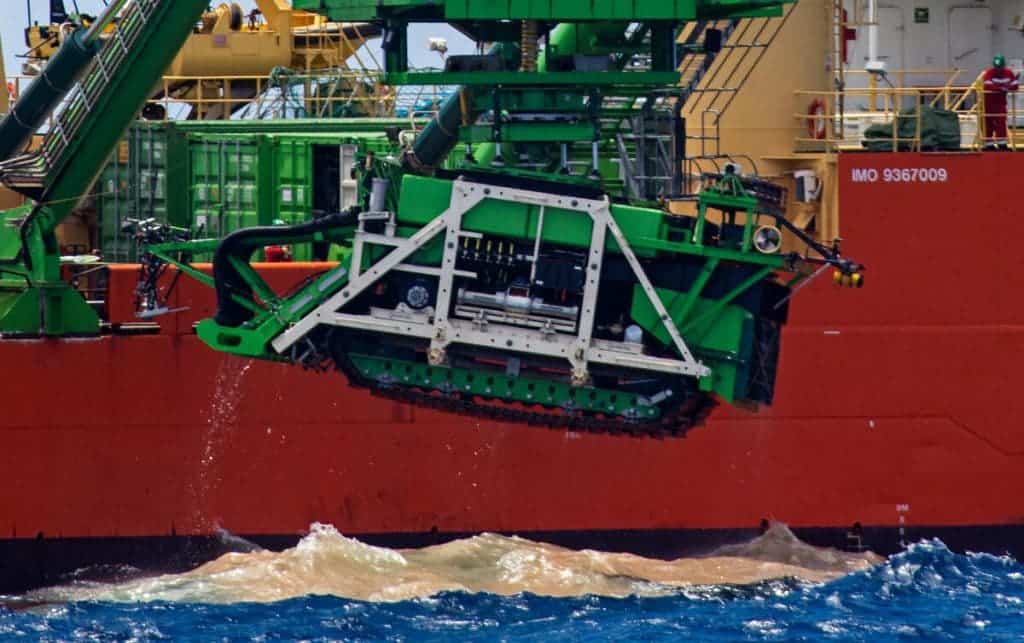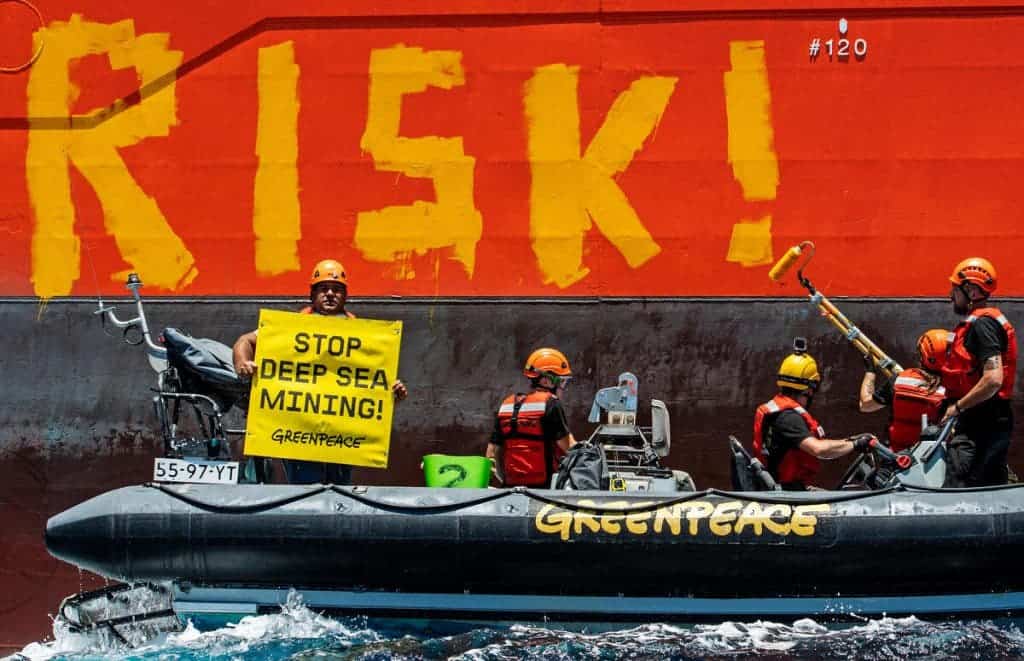It was supposed to be one of the world’s first tests for deep-sea mining — a controversial activity fiercely debated by industrialists on one side, and environmentalists on the other. And, as many anticipated, it was a complete disaster.
A prototype deep-sea mining machine is now lying stranded on the Pacific Ocean floor after the device got detached from the cable linking it to the ship at the surface.

Mining is always tough. But when you’re trying to do it under hundreds of meters of water, everything gets exponentially harder.
Deep-sea mining (or deep-seabed mining) is, as the name implies, the process of retrieving mineral deposits from the deep seafloor. Generally, this ‘depth’ refers to parts of the ocean over 200 meters deep — an area that covers around 65% of the Earth’s surface.
In addition to rich mineral resources, these areas also host rich biodiversity, as well as unique geological features such as mountain ranges, plateaus, volcanic peaks, canyons, vast abyssal plain, and the world’s deepest trenches — such as the Mariana Trench, which goes down almost 11,000 meters.
All countries have the right and opportunity to mine the deep sea and the eventual royalties obtained from the activity will have to be divided equally among all of them, in theory. But as the rules aren’t firmly in place yet, countries are only on an exploratory phase in international waters, with contracts allocated to explore the deep sea.
Global Sea Mineral Resources (GSR), the deep-sea exploratory division of dredging company DEME Group, has been testing Patania II for a time. The 25-tonne mining robot prototype was trialed in the Clarion Clipperton Zone in the Pacific since April 20. The machine was supposed to collect nodules rich in cobalt and other battery metals.
Once found, such minerals would be used to supplement in-demand electronic products and energy storage such as smartphones, laptops, solar panels, wind turbines, and electric vehicles. At least this was the plan — but the plan went terribly south.
With the first phase of the trials almost complete, the umbilical cable became detached from its connection to the machine. A spokesman for GSR told BBC News that “on its final dive in the GSR area, a lifting point separated and Patania II now stands on the seafloor.” Operations to reconnect the machine have already started.
“It’s ironic that an industry that wants to extract metals from the seabed ends up dropping it down there instead. This glaring operational failure must act as a stark warning that deep-sea mining is too big a risk. Losing control of a 25-tonne mining machine at the bottom of the Pacific Ocean should sink the idea of ever mining the deep sea,” said in a statement Sandra Schoettner, a biologist from Greenpeace

Last week Greenpeace activists painted “RISK!” across the side of the ship Normand Energy, the ship chartered by GSR to operate the Patania II, to highlight the threat of deep-sea mining to the oceans. GSR was awarded a 75,000 square kilometer exploration contract area to operate in and is scheduled to do more tests.
Clearly, there are serious technical challenges to operating in the deep sea. Earlier this month, BMW, Volvo, Samsung and Google declared that they would join a moratorium on deep ocean metals until the risks to the environment are better understood.
The trial by GSR is being observed by independent scientists from 29 European institutes who will analyze data and samples collected by the robot in order to measure the impact of seabed mining. The activity is questioned for its potential impact on the seabed, the water column above it, and the surrounding area.


